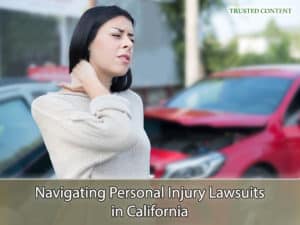How California’s Auto Insurance Laws Protect Injury Victims
California's approach to auto insurance and personal injury law is designed with the protection of injury victims at its core. Unlike states that utilize a no-fault insurance system, California adheres to an at-fault, or tort, system, which has significant implications for how compensation is pursued following a vehicle accident. This distinction ensures that the party responsible for causing an accident is also responsible for compensating the injured parties. This article aims to explore the intricacies of California's auto insurance laws, focusing on the alternatives to Personal Injury Protection (PIP) insurance, such as Medical Payments (MedPay), and how these laws are structured to safeguard those injured on California's roads.

Detailed Overview of California's At-Fault Insurance System
Detailed Overview of California's At-Fault Insurance System
In California's at-fault insurance system, the driver who is determined to be at fault for an accident is liable for the damages and injuries that result. This system necessitates that all drivers carry liability insurance to cover potential damages they may cause. The minimum liability insurance requirements in California are $15,000 for injury/death to one person, $30,000 for injury/death to more than one person in an accident, and $5,000 for property damage. This framework ensures that victims have a direct route to seek compensation for their injuries, medical expenses, and other losses directly from the at-fault driver's insurance provider, emphasizing the importance of establishing fault in the aftermath of an accident.
Exploring MedPay: California's Alternative to PIP Insurance
MedPay serves as a voluntary alternative to PIP insurance in California, offering coverage for medical expenses and funeral costs without regard to fault. This type of coverage is beneficial as it provides immediate financial assistance for medical bills following an accident, regardless of who was at fault. MedPay can be particularly advantageous in scenarios where the at-fault party's insurance is insufficient or when the determination of fault is prolonged. However, it's crucial to note that MedPay does not cover lost wages or offer compensation for pain and suffering, which are often significant components of post-accident recovery.
The Advantages and Limitations of MedPay in Injury Claims
Opting for MedPay can significantly streamline the process of covering medical expenses after an accident, offering a layer of financial security that is immediate and fault-independent. This coverage is especially pertinent in accidents involving pedestrians or cyclists, where MedPay can provide essential coverage absent in standard auto insurance policies. Despite its benefits, MedPay's limitations are notable; it does not cover lost wages, pain and suffering, or other non-economic damages. These limitations underscore the necessity for comprehensive insurance coverage and, in many cases, the pursuit of legal action to recover the full spectrum of damages an injured party is entitled to.

Navigating Personal Injury Lawsuits in California
Navigating Personal Injury Lawsuits in California
California's legal framework allows for the filing of personal injury lawsuits in the event of an auto accident, independent of any MedPay coverage the victim may have. This is particularly important for recovering damages not covered by insurance, such as pain and suffering, lost wages, and other non-economic losses. The ability to file a lawsuit is contingent upon proving the other driver's liability and demonstrating the extent of the damages suffered. This legal avenue is critical for ensuring that victims can pursue the full compensation they deserve, beyond what insurance alone can provide.
Understanding California's Insurance Requirements and Their Impact
California mandates that all drivers maintain minimum levels of liability insurance to ensure that funds are available to compensate victims in the event of an at-fault accident. These requirements are foundational to California's approach to protecting injury victims, ensuring that at-fault drivers have the financial means to cover the damages they cause. However, given the high costs associated with serious injuries, these minimum coverages often fall short of covering the full extent of a victim's losses, highlighting the importance of additional coverages such as MedPay and the potential need for legal action to secure adequate compensation.
Making Informed Coverage Decisions in California
Choosing the right auto insurance coverage in California requires careful consideration of one's personal circumstances and the potential risks on the road. While the state's minimum insurance requirements provide a basic level of protection, they may not fully cover the extensive costs associated with serious accidents. Drivers should consider additional coverages, such as MedPay, to ensure broader protection. Consulting with a legal professional can offer valuable insights into the complexities of California's insurance laws and help individuals make informed decisions about their coverage, ultimately enhancing their protection in the event of an accident.

How California's Auto Insurance Laws Protect Injury Victims
How California's Auto Insurance Laws Protect Injury Victims
California's auto insurance laws are intricately designed to protect injury victims, offering clear paths to compensation through the at-fault system and optional coverages like MedPay. Understanding these laws and making informed insurance choices are crucial steps in safeguarding oneself against the financial impacts of an auto accident. For those injured and seeking legal assistance, Napolin Accident Injury Lawyer stands ready to help. Our extensive experience in personal injury and workers' compensation cases across California positions us to effectively represent injury victims. By calling us at (866)-NAPOLIN for a free consultation, you can take a significant step towards navigating your rights and securing the compensation you rightfully deserve.
- Understanding Uber Accidents and Insurance Coverage Periods in California - April 8, 2025
- A Guide on Red Light Auto Accidents in California - August 14, 2024
- Self-Representing in a California Personal Injury Claim - August 13, 2024
